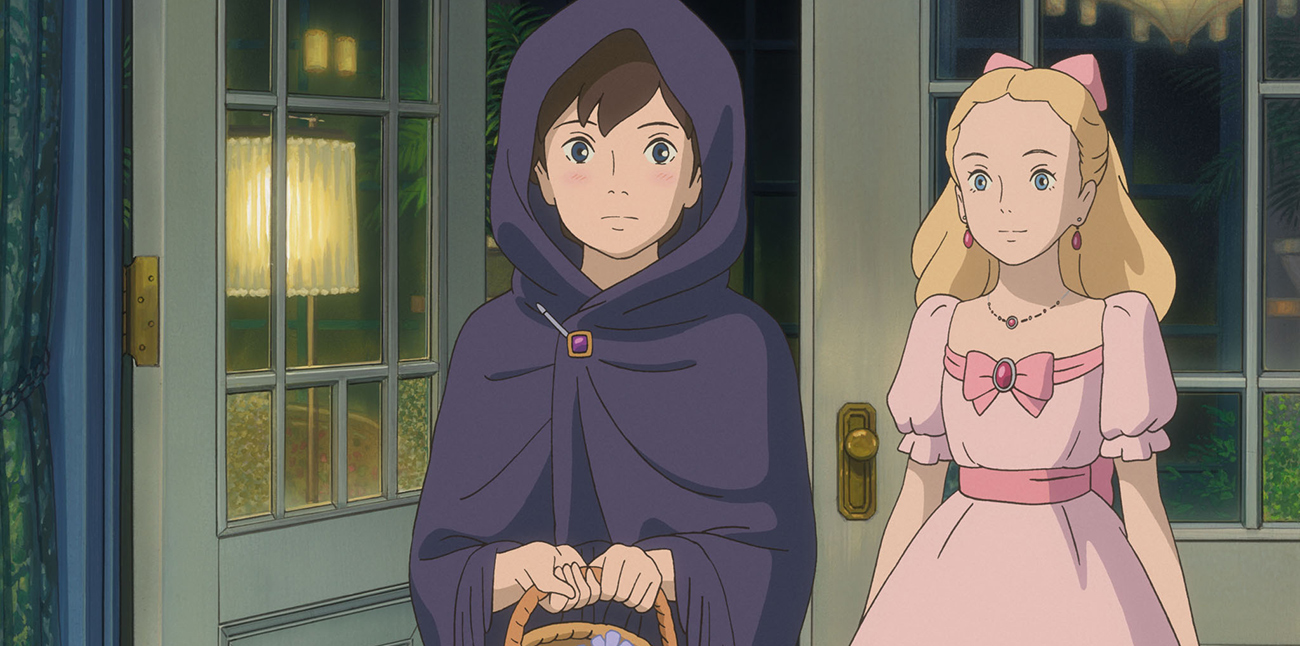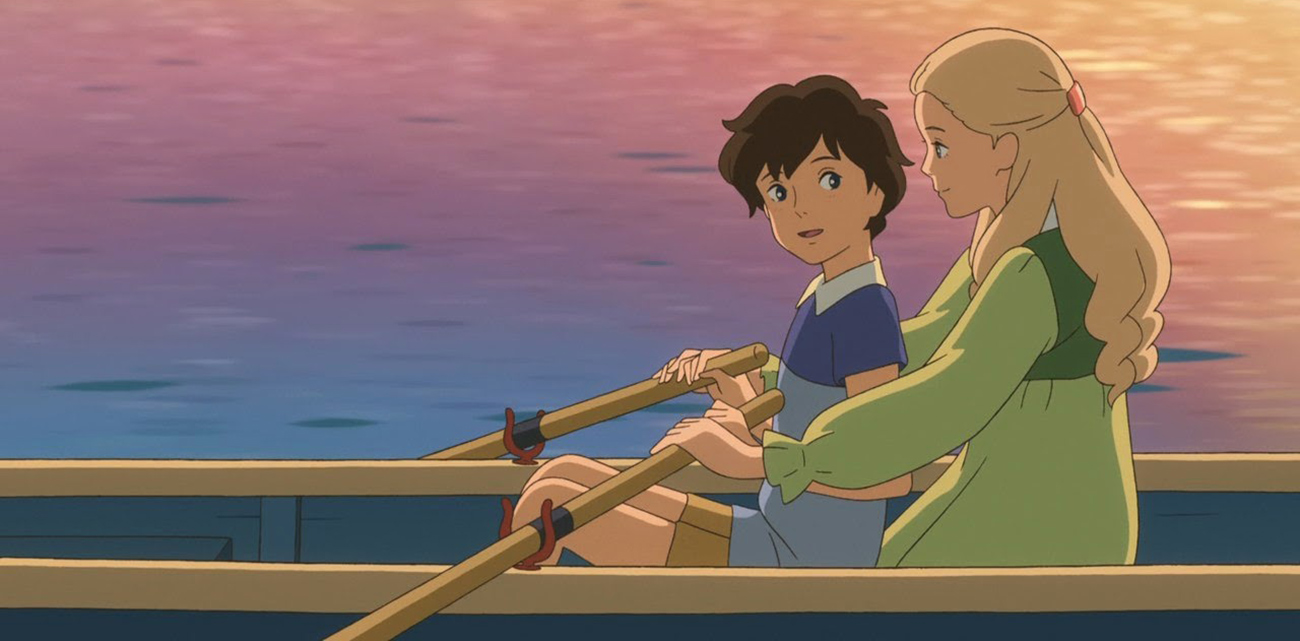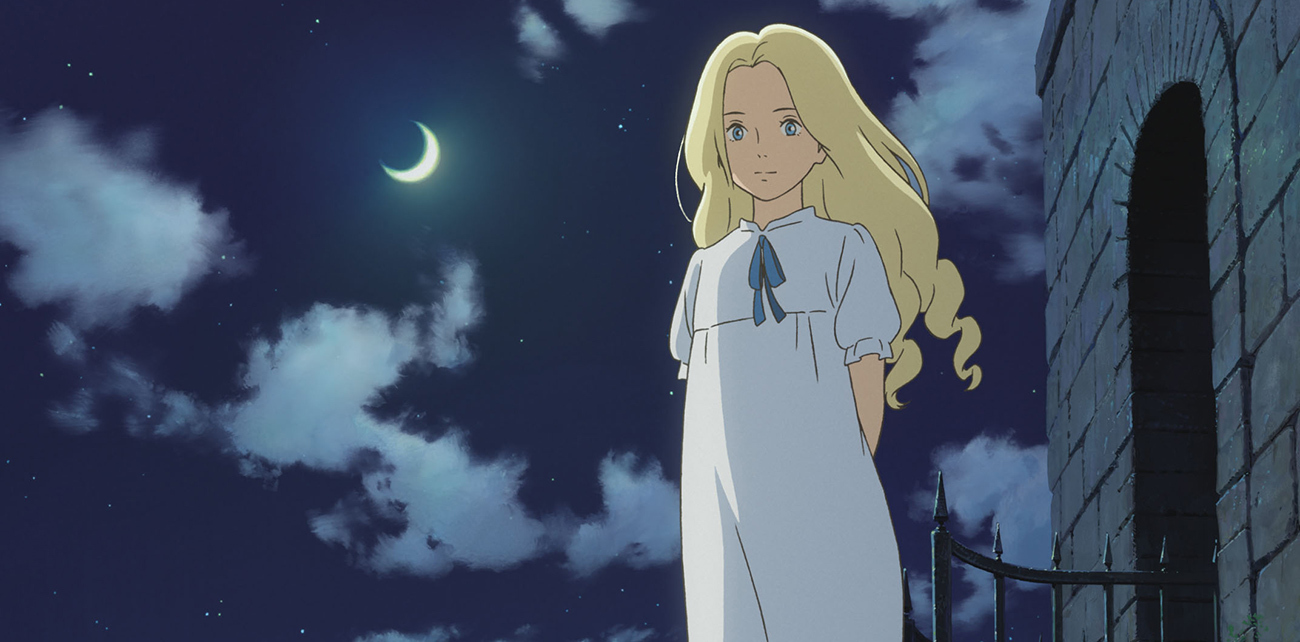The latest film from Studio Ghibli is director Hiromasa Yonebashi‘s follow up to 2011’s The Secret World of Arrietty. It could also be considered be the first film in the post Miyazaki-Takahata era for Ghibli, and possibly the last film from the studio, as Studio Ghibli’s future still remains up in the air after the retirement of Miyazaki and possibly even that of Takahata’s. That’s a lot for When Marnie Was There to live up to.
Putting all of those expectations aside and taking When Marnie Was There as its own film however, it is a breath of fresh air in the animated film landscape and a lovely escape from the increasingly saturated computer-animated offerings from Hollywood – films that tend to underestimate the mental capacity of their audiences.

When Marnie Was There is the story of 12 year old Anna, a tomboy and a loner. Anna is moody and finds it hard to connect with her schoolmates. She is a character that audiences will immediately recognise, either in themselves or in a friend. A majority of tween female characters in films are always whip-smart and precocious, so it is refreshing to see Studio Ghibli present us a young female protagonist that is actually much truer to life: full of hopes and dreams and insecurities and bouts of self-loathing that plague those difficult teenage years. Part of Anna’s self-loathing stems from the fact that she is adopted, so she feels inadequate and also has abandonment issues, which manifest strikingly in her friendship with Marnie.
Anna suffers from a severe case of asthma, so for that summer, she is sent to her relatives’ house in the countryside of Hokkaido for the fresh air. Anna is a talented artist and thus spends her days sketching, until one day she chances upon a mysterious old manor inhabited by an ethereal blonde girl who captures her imagination. This girl would be Marnie, who lives a seemingly charmed life in the mysterious manor, but is also tremendously lonely, neglected by absentee parents and bullied by the staff of the house. Anna and Marnie strike up a fast and deep friendship, as if they’ve known each other all their lives. They share secrets, hold hands, comfort each other, and sneak out at night to meet.

Anna’s fixation on Marnie initially had me convinced that there was a romantic subtext to this very intimate friendship and while the revelations in the final act can be said to negate such ideas, I believe that the film itself provides enough material for alternate readings.
Nevertheless, When Marnie Was There is all about female relationships. Not just friendships, but also the bond between mothers and daughters. Anna has a strained relationship with her foster mother, and part of Anna’s emotional journey is to come to terms with her identity as an adopted child and accept the love of her foster mother.
The approach to entertain and touch audiences of all generations has always been the factor to set Studio Ghibli and Japanese anime films apart from Hollywood. They offer up a far more diverse range of stories, characters, tones and graphic styles and never underestimate their audience. Furthermore, Studio Ghibli also has a fantastic track record of turning out a variety of female protagonists in their oeuvre as opposed to their Western counterparts, and When Marnie Was There is no exception with characters as richly developed as Anna and Marnie.

Studio Ghibli’s traditional style of cel animation suits this old-fashioned little tale; the colours and details are particularly vibrant because of the Hokkaido countryside setting. Takatsugu Muramatsu‘s score is also beautifully light and airy, accompanied by original tracks by American recording artist Priscilla Ahn.
When Marnie Was There is a melancholic, delicately told story, that for some Studio Ghibli fans mightn’t feel like it reaches the heights of epic storytelling seen in Princess Mononoke or Spirited Away. But it doesn’t have to as Yonebashi’s film can still strike up a warm-hearted tale of friendship, family bonds, and one girl’s journey to opening her heart up to others. It’s a gem in its own right.
